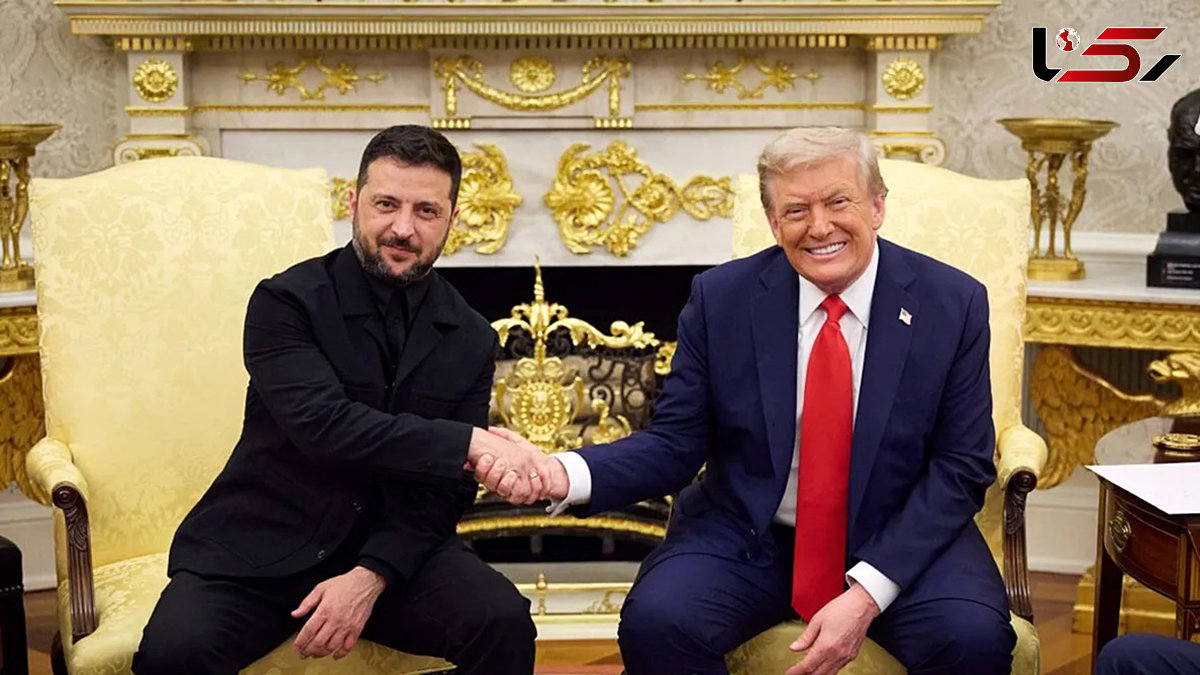Trump Plans Meeting with Putin in Budapest as Zelenskyy Heads to Washington to Push for Missiles Deal
Rokna Political Desk: US President Donald Trump has announced plans to meet Vladimir Putin in Budapest, as Ukrainian President Volodymyr Zelenskyy prepares for high-stakes talks at the White House, where the potential supply of Tomahawk missiles to Kyiv is expected to dominate discussions.

The U.S. president has repeatedly hinted at supplying Kyiv with Tomahawk cruise missiles, though some in Moscow suggest the Kremlin views the proposal as a negotiating tactic.
Ukrainian President Volodymyr Zelenskyy is set to visit the White House on Friday for high-level talks with Donald Trump — just hours after the U.S. president announced plans for another meeting with Vladimir Putin in Budapest following what he described as a “very productive” phone conversation.
At the top of the agenda for Zelenskyy’s visit will be the possible U.S. delivery of Tomahawk cruise missiles to Ukraine. Trump has recently suggested he might approve the transfer, a move that would grant Kyiv its longest-range precision weapon yet, capable of striking deep into Russian territory — even reaching Moscow.
However, Trump’s conciliatory remarks after his latest conversation with Putin have raised doubts about whether such aid will materialize soon, rekindling European concerns over potential U.S. concessions to Moscow.
Trump admitted that Putin “didn’t like” the idea when he brought up sending Tomahawks to Ukraine — missiles with a range of about 1,500 miles (2,415 km) — and later seemed to question whether Washington could actually spare them. “We need them too,” Trump said. “So I don’t know what we can do about that.”
Fresh from brokering a peace agreement in Gaza, Trump is reportedly eager to build on that diplomatic success by pushing for an end to Russia’s full-scale invasion of Ukraine, now entering its fourth year. On the eve of Zelenskyy’s arrival, Trump confirmed his intention to meet Putin in the Hungarian capital at an unspecified date in pursuit of a negotiated resolution to the war. The two leaders last met in Alaska in August, though that meeting yielded no breakthrough.
Throughout his presidency, Trump has alternated between threats and overtures toward Moscow, vowing at times to impose severe sanctions before later softening his tone after personal exchanges with Putin.
While transferring Tomahawks to Ukraine would carry major symbolic weight — and has already provoked irritation in the Kremlin — experts note that U.S. stockpiles are limited, with estimates ranging between 20 and 50 missiles available.
Over the weekend, Trump and Zelenskyy held two phone calls, which the Ukrainian president described as “productive,” marking a sharp reversal from their tense February meeting at the White House that exposed deep strains in their relationship.
Tomahawks, first used in combat during the 1991 Gulf War, are typically launched from naval vessels and submarines — assets Ukraine currently lacks. Each missile costs roughly $1.3 million (£1 million) and can strike targets far beyond the range of drones, delivering a much greater payload.
A newer land-based version, known as the Typhon system, could be a more feasible option for Ukraine, though it remains in limited production. The U.S. Army reportedly possesses only two launchers, while another model, the X-Mav — a more mobile variant — was demonstrated earlier this week.
Rob Lee, a senior fellow at the Foreign Policy Research Institute, noted: “The U.S. doesn’t have a large supply of Tomahawks, and only a few launch platforms exist that can deploy them from the ground.”

Similarly, Russian defense analyst Pavel Luzin explained that “the Typhon is a newly developed system still being built for the U.S. military. It’s not just a launcher — it comes with transport, reloading vehicles, and a command post.”
In recent weeks, the Trump administration has also authorized the sharing of U.S. intelligence to help Ukraine target Russian oil refineries using locally made drones and American-supplied ATACMS missiles. These strikes have disrupted Russia’s fuel production and pushed gasoline prices sharply higher.
Military experts suggest that the addition of Tomahawks could reinforce this strategy, though they caution that such missiles are most effective when launched in coordinated salvos — something difficult to achieve given the small number available.
Polish Foreign Minister Radek Sikorski argued on Tuesday that Tomahawks could prove particularly effective against Russia due to its vast size and limited air defense coverage. According to the Institute for the Study of War, as many as 1,900 Russian military targets fall within range of the longest Tomahawk variant, which exceeds 1,500 miles.
Send Comments